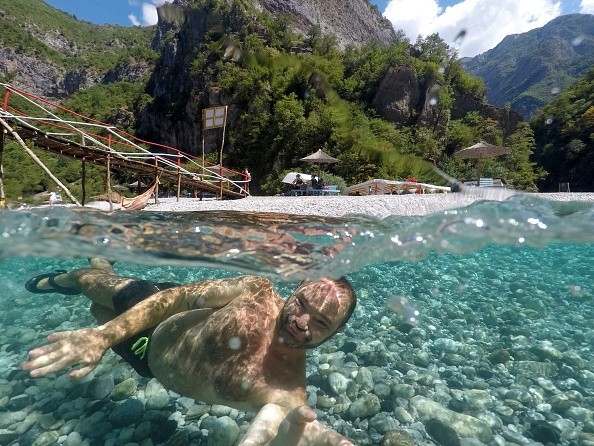The Tehama County Health Services Agency said a child below age 10 was diagnosed with primary amebic meningoencephalitis (PAM), which is an uncommon infection that a brain-eating amoeba causes.
In a news release on the 4th of August, health officials said "the most likely source of infection for this child was swimming in a freshwater lake in Tehama County."

Brain-eating Amoeba
Health officials did not reveal the name of the lake or identify the victim. The infection is very uncommon, and since 1971, there have been just 10 cases recorded in California as per the health agency.
People can get infected when water that has Naegleria fowleri moves up their nose. The Naegleria fowleri is usually referred to as brain-eating amoeba. Also, it is capable of causing a "devastating infection," as per the Centers for Disease Control and Prevention.
How Can One be Infected?
CDC said immediately the amoeba goes into the nose, it moves to the brain and it causes PAM there, this is usually deadly. Generally, the infection happens when people visit warm freshwater places to swim or dive. Places like lakes and rivers.
The brain-eating amoeba cannot spread from one person to another, and people don't get it from taking water or swallowing water that has it. Immediately the amoeba enters the body, it can move to the brain, thereby destroying the brain tissue, as per county health officials.
Generally, patients who find out they have been infected show symptoms including fever, severe headache, nausea and at times vomiting, as per the CDC.
After some time, patients can have a stiff neck and seizures. Also, they can start hallucinating or even go into a coma.

The Survivors
As per the CDC, Just four out of 148 people have been known to defeat infection from the brain-eating amoeba in the U.S. The survivors include two children who were infected in 2013 and a boy, 16, who was infected in 2016
The infection was gotten early in these cases, and doctors were able to start treatment immediately.
County health officials said: "If you or your child has had nasal exposure to warm, freshwater in the last 10 days and develop symptoms such as severe headache, fever, nausea, or vomiting, consult a doctor right away. Someone exposed to water contaminated with the amoeba but is not experiencing symptoms after 10 days is probably not infected."
Health officials said the only way to totally prevent the infection is to steer clear of swimming in freshwater. Also, you could lower the risk by either holding your nose or making use of a nose clip while entering under water, or by always leaving your head above water.
Related Article : Watch Out! Brain-Eating Amoeba That Killed 11-Year-Old Girl Found Lurking in U.S. National Park
For more news, updates about brain-eating amoebas and similar topics don't forget to follow Nature World News!
© 2025 NatureWorldNews.com All rights reserved. Do not reproduce without permission.





